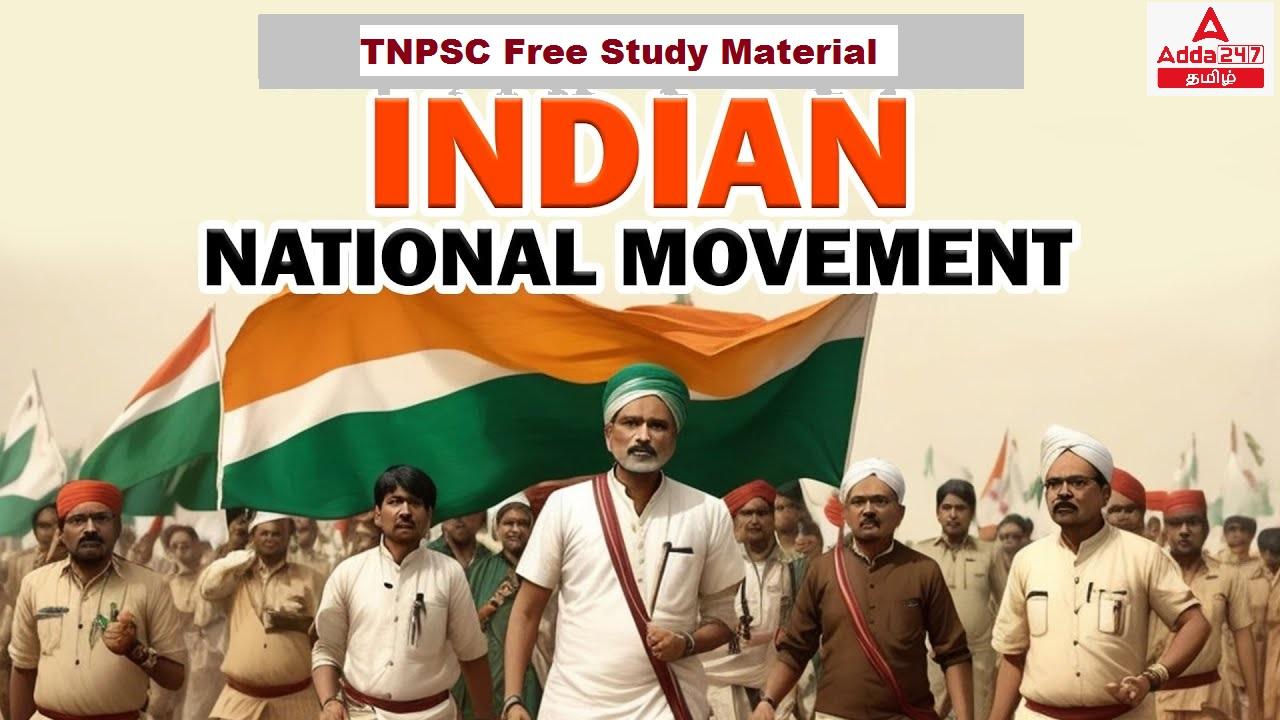இந்தக் கட்டுரையில், TNPSC குரூப் 1, குரூப் 2, குரூப் 2A, குரூப் 4 மாநிலப் போட்டித் தேர்வுகளான TNUSRB, TRB, TET, TNEB போன்றவற்றுக்கான முறைகள் இலவசக் குறிப்புகளைப் பெறுவீர்கள்.தேர்வுக்கு தயாராவோர் இங்குள்ள பாடக்குறிப்புகளை படித்து பயன்பெற வாழ்த்துகிறோம்.
Partition of Bengal -1905
Introduction
January 6, 1899- Lord Curzon was appointed as the new Governor General and Viceroy
of India.
During this British unpopularity was increasing due to the impact of recurring famine
and the plague.
Curzon implemented a series of repressive measures to change the opinion of the
educated Indian class.
Reduced the number of elected Indian representatives in the Calcutta Corporation
(1899).
The University Act of 1904 brought the Calcutta University under the direct control of
the government.
The Official Secrets Act (1904) was amended to curb the nationalist tone of Indian
newspapers.
Finally, he ordered partition of Bengal in 1905. The partition led to widespread protest
all across India, starting a new phase of the Indian national movement.
Bengal partition by Curzon
1860s – Bengal Presidency as an administrative unit was indeed of unmanageable in size;
the necessity of partition was being discussed.
March 1890- Partition scheme was revived.
In Assam, Curzon was requested by the European planters to make a maritime outlet
closer to Calcutta to reduce their dependence on the Assam– Bengal railways.
December 1903- Curzons, Minutes on Territorial Redistribution of India, was later
modified and published as the Risely Papers.
The report gave two reasons for partition
Relief of Bengal and
The improvement of Assam.
In partition plan the Bengal was to be divided into two provinces.
The new Eastern Bengal and Assam were to include the divisions of Chittagong, Dhaka,
parts of Rajshahi hills of Tippera, Assam province and Malda.
Aimed at Hindu Muslim Divide
The intention of Curzon was to suppress the political activities against the British rule in
Bengal and to create a Hindu–Muslim divide.
The government intentionally ignored the idea of dividing Bengal on linguistic basis
Curzon was adamant in dividing Hindu and Muslim population in the divided Bengal.
Geographically Bengal was partitioned into Eastern Bengal and Western Bengal by River
Bhagirathi.
Eastern Bengal dominated by the Muslims,
Western Bengal dominated by the Hindus
Central Bengal – Two communities balancing out each other.
To woo the Muslim population in Bengal
February 1904- At Dhaka, Curzon in his speech assured the Muslims that they enjoy a
unity in new province of East Bengal.
Instead of dividing the Bengali people along the religious line partition united them.
By the end of the nineteenth century, Bengali language had acquired literary status with
Rabindranath Tagore as the central figure. The growth of regional language newspapers
played a role in building the narrative of solidarity.
Anti-Partition Movement
Since December 1903- Both the militants and the moderates were critical of the
partition of Bengal.
Leaders like Surendranath Banerjee, K.K. Mitra, and Prithwishchandra Ray remained
restricted to prayers and petitions.
Objective- Limited to influencing public opinion in England against the partition.
17 July 1905- At a meeting in Calcutta, moderates went beyond their conventional
political methods and decided to extend the protest to the masses. In the same
meeting, Surendranath Banerjee gave a call for the boycott of British goods and
intuitions.
19 July 1905- Partition of Bengal was officially declared.
7 August1905- At the Calcutta Town Hall meeting, a formal proclamation of Swadeshi
Movement was made.
Spread of the Movement
Besides the organized efforts of the leaders, there were spontaneous reactions against
the partition of Bengal.
Students in particular came out in large numbers.
Reacting to the increased role of the students in the anti-partition agitation, British
officials threatened to withdraw the scholarships and grants to those who participated
in programmes of direct action.
In response to this, a call was given to boycott official educational institutions and it was
decided that efforts were to be made to open national schools.
Thousands of public meetings were organized in towns and villages across Bengal.
Religious festivals such as the Durga Pujas were utilized to invoke the idea of boycott.
16 Oct 1905 – The day Bengal was officially partitioned –– was declared as a day of
mourning. Thousands of people took bath in the Ganga and marched on the streets of
Calcutta singing Bande Mataram.
**************************************************************************
| Adda247 TamilNadu Home page | Click here |
| Official Website=Adda247 | Click here |









